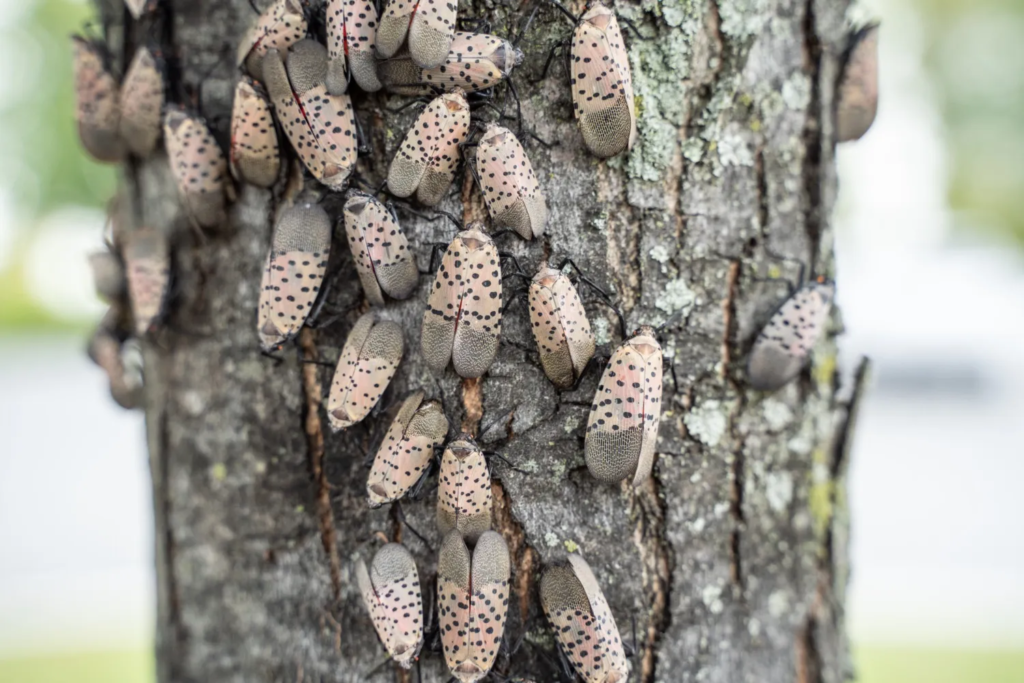By Jessica Jacobs
A new invasive insect is causing concern across the United States, and officials are urging citizens to take swift action. The spotted lanternfly, though visually striking, poses a significant threat to ecosystems, agriculture, and biodiversity.
What Is the Spotted Lanternfly?
Scientifically known as Lycorma delicatula, the spotted lanternfly is native to Asia but has quickly become a destructive presence in the U.S. First detected in Pennsylvania in 2014, this insect feeds voraciously on over 70 plant species, including trees, fruits, and crops. Their appetite isn’t their only problem—they reproduce rapidly, making them difficult to control.

Why Are They So Dangerous?
Lanternflies not only consume vital plant resources but also excrete a sticky substance called honeydew during feeding. Honeydew fosters mold growth, which weakens plants and disrupts their ability to grow. This cycle threatens agricultural production, including vineyards, orchards, and forests.

The insect’s impact extends beyond agriculture. By endangering plant life, lanternflies contribute to biodiversity loss, undermining efforts to combat climate change.
How Do Lanternflies Spread?
Although they don’t travel far on their own, lanternflies are excellent hitchhikers. They often attach themselves to vehicles, animals, and even clothing, allowing them to spread across states.

State Responses to the Lanternfly Crisis
Pennsylvania has declared the lanternfly a serious threat, enacting the “Spotted Lanternfly Order of Quarantine and Treatment.” This regulation imposes fines and penalties for transporting the insect or infested items like grills, RVs, or equipment.
Other states are taking similar measures. In New York, lanternflies have become a critical threat to the Finger Lakes and Long Island vineyards. The state’s Department of Agriculture urges residents to report sightings, capture the insects, and kill them by freezing or submerging them in rubbing alcohol.

What Can You Do?
- Kill on Sight: If you see a spotted lanternfly, officials recommend killing it immediately.
- Check Your Belongings: Inspect vehicles, outdoor equipment, and clothing for signs of the insect before traveling.
- Report Sightings: Contact local agricultural or environmental authorities if you spot lanternflies in your area.
The Fight for Biodiversity
Scientists and researchers are working tirelessly to control the lanternfly population. Their efforts include biological control methods and public awareness campaigns. However, the situation is urgent—unchecked, these insects could further disrupt ecosystems already strained by climate change.
By staying vigilant and acting decisively, we can help mitigate the damage caused by the spotted lanternfly. Every effort counts in protecting our environment and agriculture from this invasive pest.
